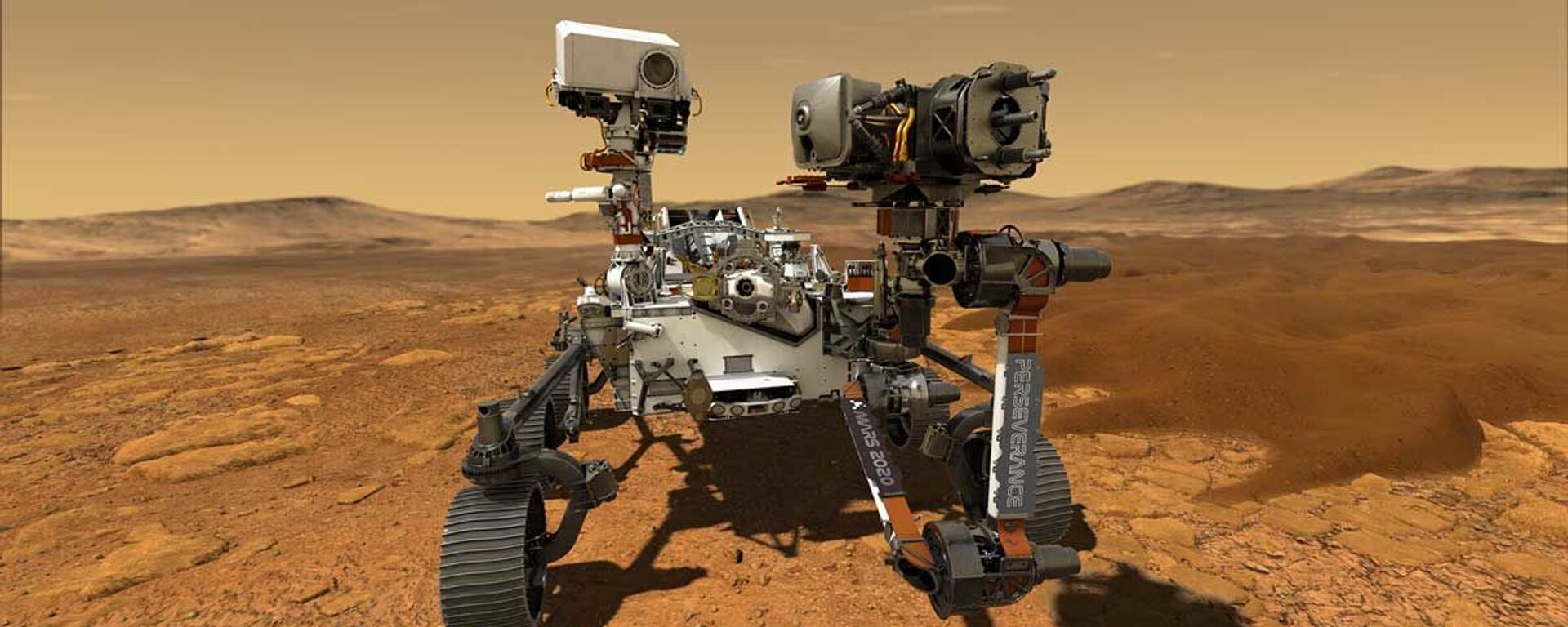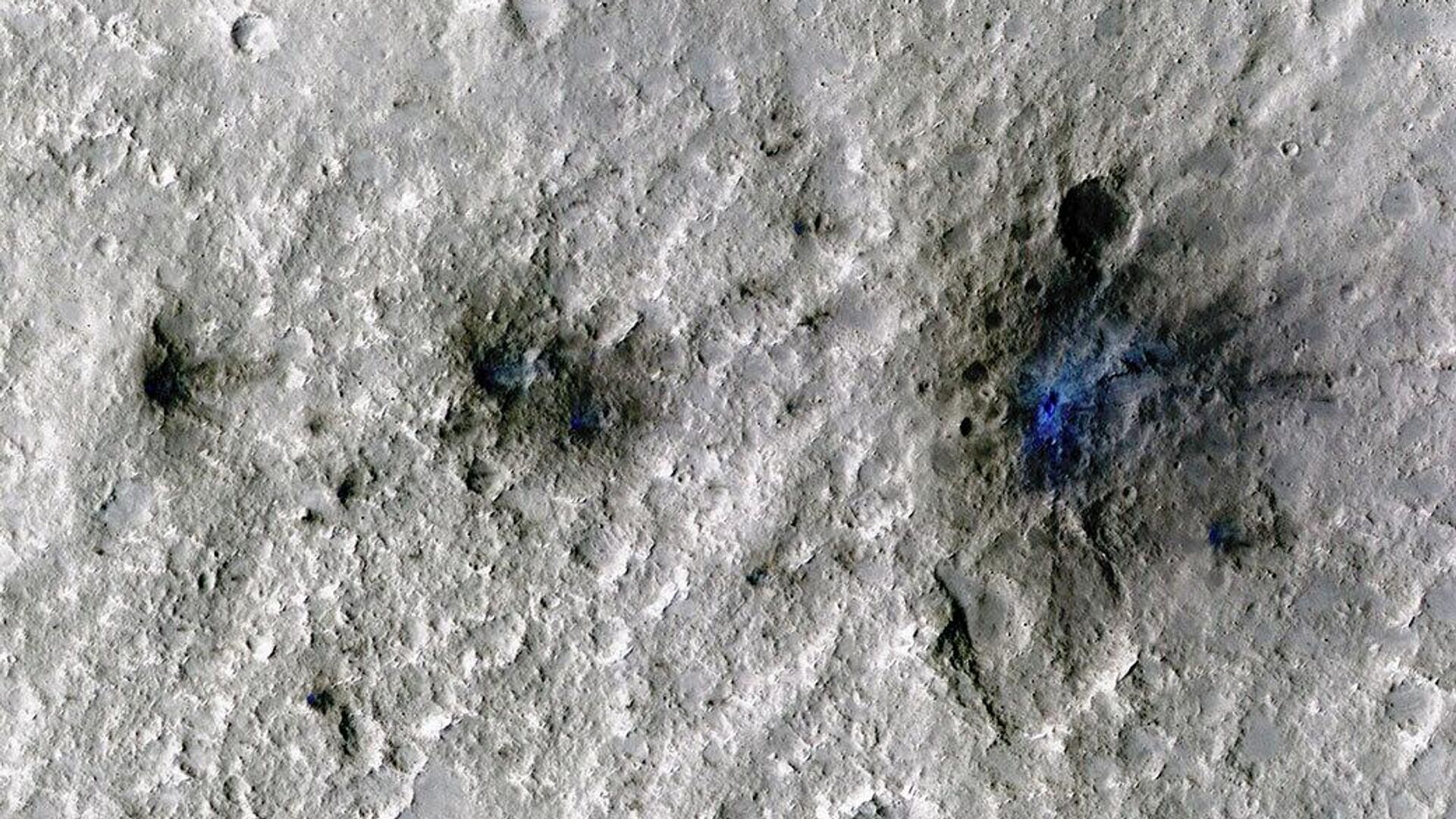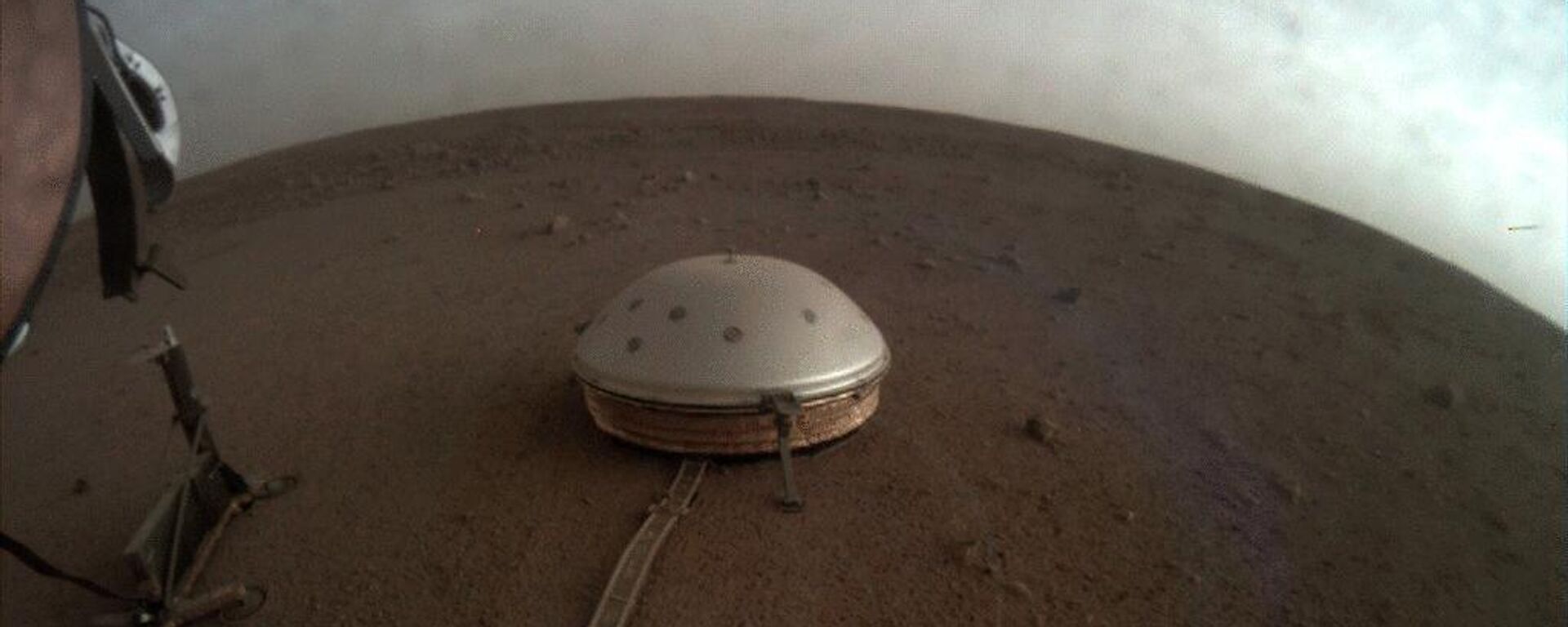https://sputnikglobe.com/20220920/space-oddity-hear-first-ever-sound-of-meteoroid-hitting-mars-surface-recorded-by-nasas-insight-1100988727.html
Space Oddity: Hear First-Ever Sound of Meteoroid Hitting Mars' Surface, Recorded by NASA's InSight
Space Oddity: Hear First-Ever Sound of Meteoroid Hitting Mars' Surface, Recorded by NASA's InSight
Sputnik International
The seismometer on InSight has picked up more over 1,300 marsquakes. The sensor, supplied by the Centre National d'Études Spatiales of France's space agency... 20.09.2022, Sputnik International
2022-09-20T04:22+0000
2022-09-20T04:22+0000
2023-04-12T16:58+0000
science & tech
nasa
nasa insight mission
nasa probe
sound
mars rover
nasa's jet propulsion laboratory
mars
space
https://cdn1.img.sputnikglobe.com/img/07e6/09/14/1100989104_0:69:1041:655_1920x0_80_0_0_1c1ec67720dfa0c9abd786ca66df8753.jpg
NASA has for the first time recorded the peculiar sound of a meteoroid slicing through the atmosphere of another planet and smashing to the surface of Mars, the agency's Jet Propulsion Laboratory announced on Monday. According to a news release, the audio clip combines "seismic and acoustic waves" that were discovered after a space rock struck Mars on September 5, 2021. The sound, which lasts for only about three seconds, starts with a hiss as the rock soars into the air and concludes with "bloops."Moreover, the impacts, which varied in distance from InSight's site in the Elysium Planitia region of Mars, from 53 to 180 miles (85 to 290 kilometers), are described in a new paper that was released on Monday in Nature Geoscience. The most spectacular entry was reportedly made by the first of the four confirmed meteoroids, which is the term for space rocks before they impact the ground. It entered Mars' atmosphere on September 5, 2021, exploding into at least three shards that each created a crater in its wake.The agency added that the impact site's position was verified by a flight by NASA's Mars Reconnaissance Orbiter over the area. Three darkish areas on the surface were visible thanks to the orbiter's Context Camera in black and white. The team behind the orbiter found these sites and then used the High-Resolution Imaging Science Experiment camera, or HiRISE, to obtain a close-up color photograph of the craters.Scientists discovered that another three events had taken place on May 27, 2020, February 18, 2021, and August 31, 2021, after examining prior data. Why more meteoroid collisions haven't been seen over the course of the nearly four-year-long mission has baffled researchers. The primary asteroid belt of the solar system is right next to the red planet, which means there are enough space rocks nearby to scour the planet's surface. More meteoroids pass through Mars' atmosphere unharmed since it is only 1% as thick as Earth's.But the InSight team speculated that other impacts might have been hidden by wind noise or seasonal atmospheric shifts. Now that the particular seismic signature of a Mars impact has been identified, researchers anticipate finding more in the data.Seismic data provide numerous hints that will improve researchers' understanding of the martian planet, the laboratory hopes.The majority of marsquakes are triggered by pressure and heat-induced breaking of underlying rocks. Scientists can analyze Mars' crust, mantle, and core by observing how the resulting seismic waves alter as they pass through various materials. The lander still has more time to investigate Mars; however, the lander's solar panels are losing power due to dust accumulation, which will eventually cause the spacecraft to shut down. It is challenging to predict with accuracy when the lander will shut down, according to NASA, but based on the most recent power assessments, engineers currently believe it may happen between October of this year and January 2023.
https://sputnikglobe.com/20220915/nasa-perseverance-rover-confirms-organic-matter-in-mars-jezero-crater-soil-samples-1100827424.html
https://sputnikglobe.com/20220910/we-must-go-deeper-new-experiment-suggests-mars-rovers-will-have-to-dig-to-find-life-1100640008.html
https://sputnikglobe.com/20220510/nasas-rover-records-magnitude-5-quake-on-mars-strongest-ever-in-history-of-planets-study-1095413472.html
mars
Sputnik International
feedback@sputniknews.com
+74956456601
MIA „Rossiya Segodnya“
2022
News
en_EN
Sputnik International
feedback@sputniknews.com
+74956456601
MIA „Rossiya Segodnya“
Sputnik International
feedback@sputniknews.com
+74956456601
MIA „Rossiya Segodnya“
science & tech, nasa, nasa insight mission, nasa probe, sound, mars rover, nasa's jet propulsion laboratory, mars, space
science & tech, nasa, nasa insight mission, nasa probe, sound, mars rover, nasa's jet propulsion laboratory, mars, space
Space Oddity: Hear First-Ever Sound of Meteoroid Hitting Mars' Surface, Recorded by NASA's InSight
04:22 GMT 20.09.2022 (Updated: 16:58 GMT 12.04.2023) Kirill Kurevlev
Managing Editor
The seismometer on InSight has picked up more over 1,300 marsquakes. The sensor, supplied by the Centre National d'Études Spatiales of France's space agency, is so sensitive that it can pick up seismic waves thousands of kilometers away. But on September 5, 2021, the cause of the waves was definitively identified as an impact for the first time.
NASA has for the first time recorded the peculiar sound of a meteoroid slicing through the atmosphere of another planet and smashing to the surface of Mars, the agency's Jet Propulsion Laboratory
announced on Monday.
According to a news release, the audio clip combines "seismic and acoustic waves" that were discovered after a space rock struck Mars on September 5, 2021.
The sound, which lasts for only about three seconds, starts with a hiss as the rock soars into the air and concludes with "bloops."
“It was the first time the sound of a meteoroid impact was captured occurring on another planet, and it might not be what you expect,” the lab
said. "You hear three ‘bloops’ representing distinct moments of the impact: the meteoroid entering Mars’ atmosphere, exploding into pieces, and striking the ground. The peculiar sound is caused by an atmospheric effect that’s also been observed in deserts on Earth, where lower-pitched sounds arrive before high-pitched sounds."
Moreover, the impacts, which varied in distance from InSight's site in the Elysium Planitia region of Mars, from 53 to 180 miles (85 to 290 kilometers), are described in a new paper that was released on Monday in
Nature Geoscience. The most spectacular entry was reportedly made by the first of the four confirmed meteoroids, which is the term for space rocks before they impact the ground. It entered Mars' atmosphere on September 5, 2021, exploding into at least three shards that each created a crater in its wake.

15 September 2022, 18:00 GMT
The agency added that the impact site's position was verified by a flight by NASA's Mars Reconnaissance Orbiter over the area. Three darkish areas on the surface were visible thanks to the orbiter's Context Camera in black and white.
The team behind the orbiter found these sites and then used the High-Resolution Imaging Science Experiment camera, or HiRISE, to obtain a close-up color photograph of the craters.
"After three years of InSight waiting to detect an impact, those craters looked beautiful,” Ingrid Daubar of Brown University, a co-author of the paper, is quoted as saying.
Scientists discovered that another three events had taken place on May 27, 2020, February 18, 2021, and August 31, 2021, after examining prior data.
Why more meteoroid collisions haven't been seen over the course of the nearly four-year-long mission has baffled researchers. The primary asteroid belt of the solar system is right next to the red planet, which means there are enough space rocks nearby to scour the planet's surface. More meteoroids pass through Mars' atmosphere unharmed since it is only 1% as thick as Earth's.
But the InSight team speculated that other impacts might have been hidden by wind noise or seasonal atmospheric shifts. Now that the particular seismic signature of a Mars impact has been identified, researchers anticipate finding more in the data.
Such impact sites "are the clocks of the solar system," according to the paper's lead author, Raphael Garcia of France's Institut Supérieur de l'Aéronautique et de l'Espace in Toulouse. "Scientists can approximate the age of a planet’s surface by counting its impact craters: The more they see, the older the surface."

10 September 2022, 16:00 GMT
Seismic data provide numerous hints that will improve researchers' understanding of the martian planet, the laboratory hopes.
The majority of
marsquakes are triggered by pressure and heat-induced breaking of underlying rocks. Scientists can analyze Mars' crust, mantle, and core by observing how the resulting seismic waves alter as they pass through various materials.
The lander still has more time to investigate Mars; however, the lander's solar panels are losing power due to dust accumulation, which will eventually cause the spacecraft to shut down. It is challenging to predict with accuracy when the lander will shut down, according to NASA, but based on the most recent power assessments, engineers currently believe it may happen between October of this year and January 2023.




